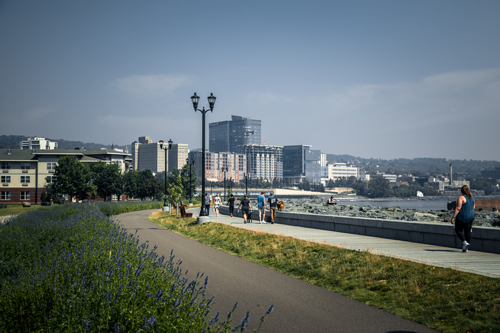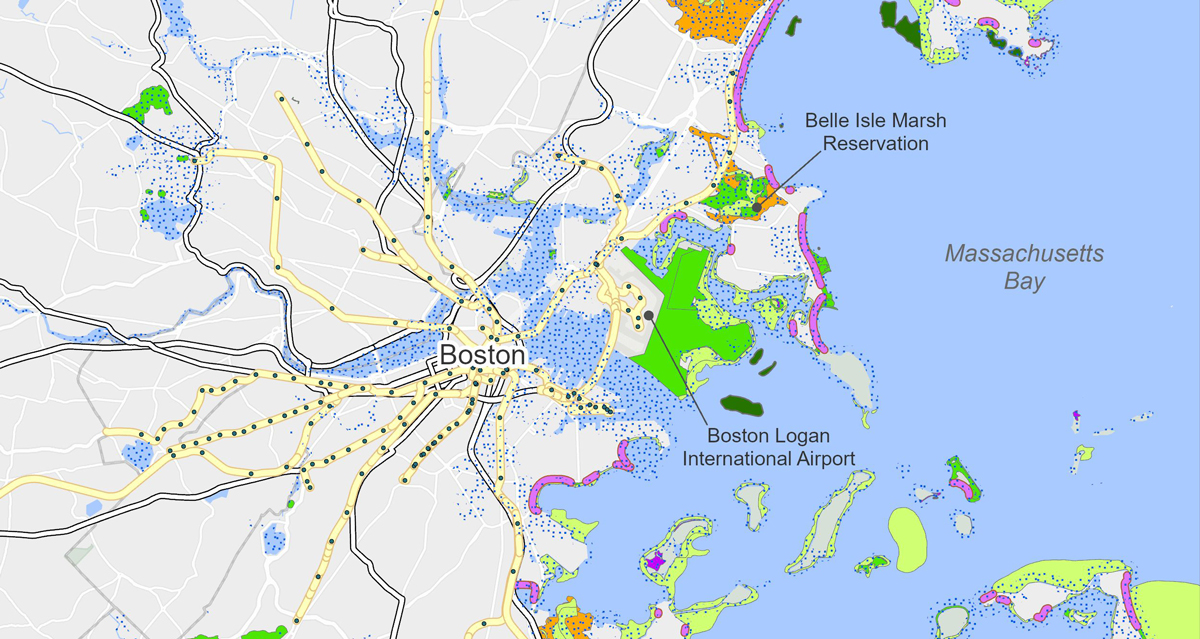Roughly 40% of the United States population lives in coastal counties [1] that are vulnerable to erosion and flooding due to sea level rise and coastal storms. Many different types of coastal protection methods have been deployed in these areas to help protect communities from the impacts of sea level rise and storms. These protection methods can be sorted into two main categories, nature-based and hard structures. Hard structures such as seawalls, breakwaters, and groins have been known to disrupt natural, alongshore processes and sediment transport, causing additional issues downstream of the structures [2]. Additionally, grey infrastructure is unable to adapt with the constantly changing environment. Nature-based features, such as salt marshes, artificial reefs, living shorelines, and floating vegetated platforms, on the other hand have the ability to adapt with changes in the environment, provide habitat, and enhance ecosystems [2]. High energy areas tend to require hard structures to help protect communities and infrastructure, however, nature-based features can be implemented in correlation with the hard structures to provide ecological benefits and mitigate some of the adverse impacts of the hard structures [2]. A recent development in the field of nature-based features is the Emerald Tutu. Emerald Tutu is a connected system of floating vegetated platforms designed to reduce wave energy and storm damage while improving water quality (Figure 1). Results from a laboratory study conducted by Emerald Tutu found a relationship between the overall network geometry and the incident wavelength and the mat performance [3].

Floating platforms (vegetated and unvegetated) have been studied by scientists and engineers to understand their ability to provide protection in coastal areas. Some key findings include:
- Unvegetated floating platforms are able to reduce wave energy as it is approaching the shore while adding vegetation to the platforms can aid in further reducing wave energy, required platform size, and improve water quality [4].
- Floating breakwaters tend to have less interference with water circulation (therefore less interference on alongshore sediment transport) than traditional breakwaters [5]
- The floating platforms should be designed to meet desired wave conditions as the size and shape of the platform determines the amount of wave attenuation [5, 6].
A field study involving Emerald Tutu and the U.S. Army Engineer Research and Development Center (ERDC) Engineering with Nature (EWN) program will use wave buoys, in situ instrumentation, imaging and potentially X-Band radar to measure wave attenuation from the interconnected floating vegetated platforms in a South Boston harbor. X-Band radar is commonly used for vessel navigation and more recently has been used to obtain nearshore significant wave heights for regions of 3 to 5 km [7]. The radar measures back scatter information from the sea surface, and the spectral information is able to be post-processed to obtain information on wave heights, currents, and rip tides in coastal areas. Recently, X-Band radars have been used in correlation with coastal protection methods such as coral reefs to measure wave dissipation in the nearshore area [8].
References
- NOAA – https://coast.noaa.gov/states/fast-facts/economics-and-demographics.html
- Schoonees, T., Gijón Mancheño, A., Scheres, B., Bouma, T. J., Silva, R., Schlurmann, T., & Schüttrumpf, H. (2019). Hard structures for coastal protection, towards greener designs. Estuaries and Coasts, 42, 1709-1729.
- Hopkins, J., Lutsko, N., Cira, G., Wise, L., Tegeler, J. (2022). The Emerald Tutu: Floating Vegetated Canopies for Coastal Wave Attenuation. Frontiers in Built Environment, 8, 885298.
- Chen, H., Liu, X., & Zou, Q. P. (2019). Wave-driven flow induced by suspended and submerged canopies. Advances in water resources, 123, 160-172.
- Dai, J., Wang, C. M., Utsunomiya, T., & Duan, W. (2018). Review of recent research and developments on floating breakwaters. Ocean Engineering, 158, 132-151.
- Landmann, J., Hammer, T. C., Günther, H., & Hildebrandt, A. (2022). Large-scale investigation of wave dampening characteristics of organic, artificial floating islands. Ecological engineering, 181, 106691.
- Jerome, P., & Maa, Y. (2005). X-band Radar Wave Observation System. Project Report, Virginia Institute of Marine Science, College of William and Mary Gloucester Point, Virginia, 23062.
- Navarro, W., Orfila, A., Orejarena‐Rondón, A., Velez, J. C., & Lonin, S. (2021). Wave Energy Dissipation in a Shallow Coral Reef Lagoon Using Marine X‐Band Radar Data. Journal of Geophysical Research: Oceans, 126(11), e2020JC017094.





